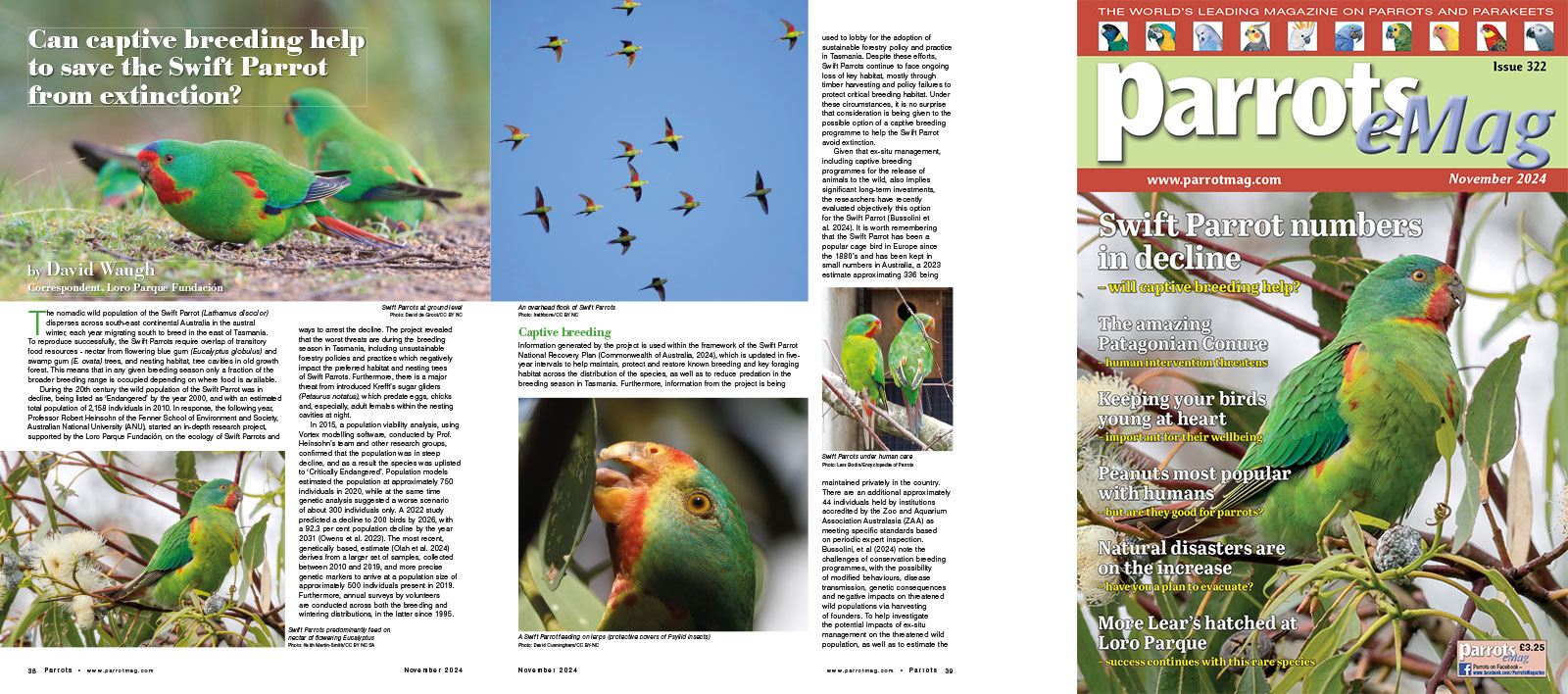
By David Waugh, Correspondent, Loro Parque Fundación
The nomadic wild population of the Swift Parrot (Lathamus discolor) disperses across south-east continental Australia in the austral winter, each year migrating south to breed in the east of Tasmania. To reproduce successfully, the Swift Parrots require overlap of transitory food resources - nectar from flowering blue gum (Eucalyptus globulus) and swamp gum (E. ovata) trees, and nesting habitat, tree cavities in old growth forest. This means that in any given breeding season only a fraction of the broader breeding range is occupied depending on where food is available.
During the 20th century the wild population of the Swift Parrot was in decline, being listed as ‘Endangered’ by the year 2000, and with an estimated total population of 2,158 individuals in 2010. In response, the following year, Professor Robert Heinsohn of the Fenner School of Environment and Society, Australian National University (ANU), started an in-depth research project, supported by the Loro Parque Fundación, on the ecology of Swift Parrots and ways to arrest the decline. The project revealed that the worst threats are during the breeding season in Tasmania, including unsustainable forestry policies and practices which negatively impact the preferred habitat and nesting trees of Swift Parrots. Furthermore, there is a major threat from introduced Krefft’s sugar gliders (Petaurus notatus), which predate eggs, chicks and, especially, adult females within the nesting cavities at night.
In 2015, a population viability analysis, using Vortex modelling software, conducted by Prof. Heinsohn’s team and other research groups, confirmed that the population was in steep decline, and as a result the species was uplisted to ‘Critically Endangered’. Population models estimated the population at approximately 750 individuals in 2020, while at the same time genetic analysis suggested a worse scenario of about 300 individuals only. A 2022 study predicted a decline to 200 birds by 2026, with a 92.3 per cent population decline by the year 2031 (Owens et al. 2023). The most recent, genetically based, estimate (Olah et al. 2024) derives from a larger set of samples, collected between 2010 and 2019, and more precise genetic markers to arrive at a population size of approximately 500 individuals present in 2019. Furthermore, annual surveys by volunteers are conducted across both the breeding and wintering distributions, in the latter since 1995.
